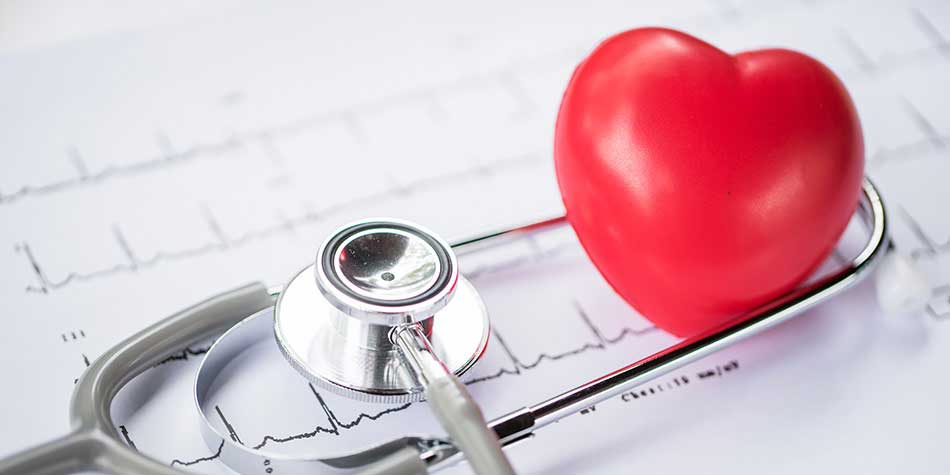Electrical signals in your heart make the heart muscles contract, pumping blood throughout your body. If the electrical signals do not flow well through the heart, it can create serious problems. An electrophysiology (EPS) study is a cardiac medical test wherein electrode wires are passed through a blood vessel and into your heart. This electrode creates and records electrical activity, helping your doctor find any problems with the flow of electricity in your heart.
Why is an electrophysiology study performed?
A cardiologist may perform an EPS study in order to:
- Find the cause of an abnormally slow heart rhythm (bradycardia)
- Find the source of an abnormally fast heart rhythm (tachycardia)
- Provoke and diagnose infrequent heart arrhythmias
- Reveal suspected arrhythmias
An EPS study also can assess:
Risk for sudden death- Symptoms of unknown cause
- Response to arrhythmia treatment
- Need for a pacemaker
- Need for an implantable cardioverter defibrillator
- Need for cryoablation—
destruction of some heart cells by freezing
Are there possible complications from an electrophysiology exam?
Problems from the procedure are rare, but all procedures have some risk. Your doctor will review potential issues, such as:
- Excess bleeding
- Infection
- Blot clots
- Injuries to blood vessels or the heart
- Abnormal heart rhythm
- Heart attack

How is an electrophysiology examination done?
Prior to the Procedure
Most EPS procedures take place in a hospital or clinic. Before performing the examination, your doctor may order the following tests:
- Blood tests
- ECG to record the heart's electrical activity
- Chest x-ray
Talk to your doctor about any medications, herbs, or supplements you are taking. You may be asked to stop taking some medications up to 1 week before the procedure. Do not eat or drink anything after midnight the day before your surgery, unless told otherwise by your doctor. In addition, you should make arrangements for someone to drive you to and from the procedure.
Anesthesia
Prior to the EPS exam, a local anesthetic will be given by needle. It will numb the area where the catheter is inserted. You also will receive a mild sedative through an intravenous line (IV) in your arm to help you relax during the test.
Description of the Electrophysiology Procedure
You will lie down on an examination table and electrodes will be placed on your chest to monitor your heartbeat. A blood pressure cuff will be placed on your arm. In addition, you may be given oxygen and an oximeter will be placed on your finger to measure your body’s oxygen levels throughout the EPS test. An area on your thigh, neck, or just below your collarbone will be cleaned with an antiseptic solution. A thin electrical wire will be inserted into a blood vessel in that area.
The electrode is passed through the blood vessel and into your heart. The catheter is viewed with the help of x-rays on a screen. The tip of the electrode sends electrical signals to your heart, and the signals make the heart beat at different speeds. Your heart rhythm is recorded to look for abnormalities. The tip of the electrode also records electrical activity at specific spots within your heart muscle.
You will lie still throughout the entire procedure.
How
The length of the electrophysiology test varies depending on what your doctor is investigating. The test usually takes 2 to 4 hours to
Is the Procedure Painful?
If an arrhythmia is induced, you may feel palpitations, shortness of breath, chest discomfort, or you may lose consciousness. The medical team usually can control arrhythmias with medication, but they may need to administer a shock to stop some rhythms. If they need to do this, you will receive additional sedation so that you do not feel pain.
You should tell your healthcare team if, at any time, you feel pain or discomfort.
Post-procedure Care
If further procedures are not necessary, you may be able to go home after about 6 hours. If additional procedures are done during the study, you may need to remain in the hospital for up to 24 hours.
Following the electrophysiology study and while still at the hospital or care facility:
- ECG and blood studies may be done.
- You will need to lie still and flat on your back for a period of time. A pressure dressing may be placed over the area where the catheter was inserted to help prevent bleeding. It is important to follow any directions given by your healthcare team.
- You will need to rest in bed until the sedative has worn off. During this time, your heart rate and blood pressure will be monitored, and you will be checked for swelling or signs of infection. If necessary, you may be given pain medication. After resting for a minimum of 4 to 6 hours, your doctor will let you know if you can go home that day or if you need to be admitted for more treatment or observation. If you are discharged on the same day as the test, you should have someone drive you home.
The results of the study may be available before you leave the hospital or within the next few days. Your doctor will notify you of any necessary follow up treatments.
At Home
When you return home, avoid lifting heavy objects, and do not engage in strenuous exercise or sexual activity until your doctor clears you to do so.
When should you call your doctor after having an electrophysiology study?
Call your doctor if any of the following occur:
- Signs of infection, including fever and chills
- Redness, swelling, increasing pain, excessive bleeding, or any discharge from the insertion site
Cough , shortness of breath, or chest pain- Your leg feels cold, turns white or blue, or becomes numb or tingly
- Lightheadedness or weakness
If you think you have an emergency, call 911 for emergency medical services right away.
$webqFacilityNumber
Need a Physician?